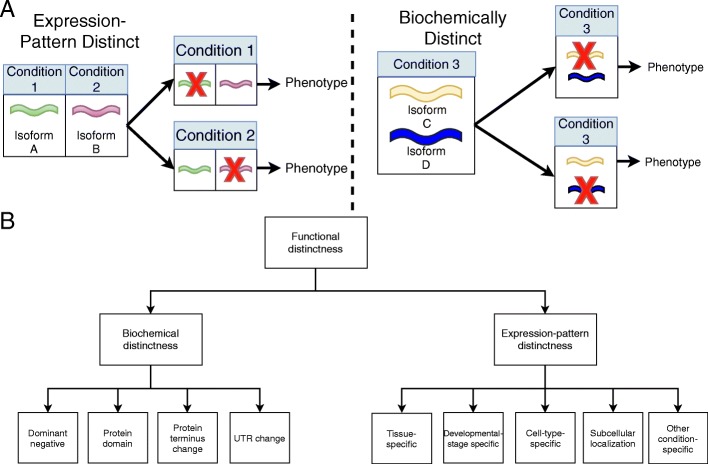Fig. 1.
Non-mutually exclusive types of functional distinctness for literature reported genes with FDSIs. a Generally, the distinctness of FDSIs of the same gene can be attributed to expression-pattern distinctness or biochemical distinctness. Expression-pattern distinctness is defined as a gene having specific splice isoforms necessary in distinct conditions. The depletion of the splice isoform in its distinct condition causes a phenotype. Biochemical distinctness is defined as a protein structure difference between splice isoforms of the same genes. While the FDSIs of the gene can be expressed in the same condition, the depletion of either splice isoform causes a phenotype. b For genes with FDSIs, we categorized the specific subtypes of functional distinctness which contributed to the distinctness between the splice isoforms of the gene (summarized in Table 4). Expression-pattern distinctness can be further categorized as “cell-type-specific”, “tissue-specific”, “developmental-stage-specific”, “subcellular localization-specific” and “other condition-specific”. Biochemical distinctness can be further categorized as “dominant-negative”, “protein domain”, “UTR change” and “protein terminus change”

